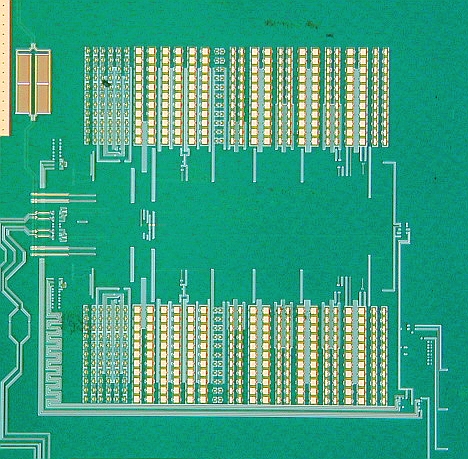Archived content
NOTE: this is an archived page and the content is likely to be out of date.
Fujitsu Develops Technology Enabling Prolonged Viewing of Digital Terrestrial Broadcasts on Mobile Phones
Low-power analog-to-digital converter employs delta-sigma modulator
Fujitsu Limited
-
[1] delta-sigma
An analog-to-digital conversion technique that is known as a method that enables the development of high-precision AD converters, by employing high-speed sampling and loop structures. This method is widely used for sound-based AD converters.
-
[2] digital terrestrial television and radio broadcasts
Refers to the Japanese terrestrial broadcasting standards, ISDB-T for television, and ISDB-TSB for radio.
-
[3] OFDM demodulator
A demodulator that uses orthogonal frequency-division multiplexing (OFDM) conversion frequencies. This type of demodulator is used for digital terrestrial television and radio broadcasting.
-
[4] variable-gain function
A function that enables an amplifier's gain (degree of amplification) to be varied. In order to be able to receive a weak signal, it is necessary to amplify the signal into a strong one by using an amplifier. However, if an amplifier's gain is fixed at a set level, it amplifies even strong incoming signals and thereby overwhelms a receiver's processing capacity. Thus, it is essential to vary gain accordingly with the strength of incoming signals.
-
[5] dynamic range
The ratio between the maximum and minimum values of a usable signal.
-
[6] phase-compensation
In negative-feedback loop systems such as for delta-sigma modulators, a large phase lag of the loop causes instability to the system because the lag makes the feedback positive. To stabilize the system, phase lag must be reduced and controlled by means of phase-compensation.
About Fujitsu
Fujitsu is a leading provider of customer-focused IT and communications solutions for the global marketplace. Pace-setting technologies, highly reliable computing and communications platforms, and a worldwide corps of systems and services experts uniquely position Fujitsu to deliver comprehensive solutions that open up infinite possibilities for its customers' success. Headquartered in Tokyo, Fujitsu Limited (TSE: 6702) reported consolidated revenues of 4.7 trillion yen (US$45 billion) for the fiscal year ended March 31, 2004.
For more information, please see: http://www.fujitsu.com/
Technical Contacts
ASIC, Network and Communications Products DivisionLSI Group
Electronic Devices Business Group
![]() E-mail: dtv-pr@ml.labs.fujitsu.com
E-mail: dtv-pr@ml.labs.fujitsu.com
Company:Fujitsu Limited
All company and product names mentioned herein are trademarks or registered trademarks of their respective companies.
Date: 09 February, 2005
City: Tokyo
Company:
Fujitsu Limited,
,
,
,
,
